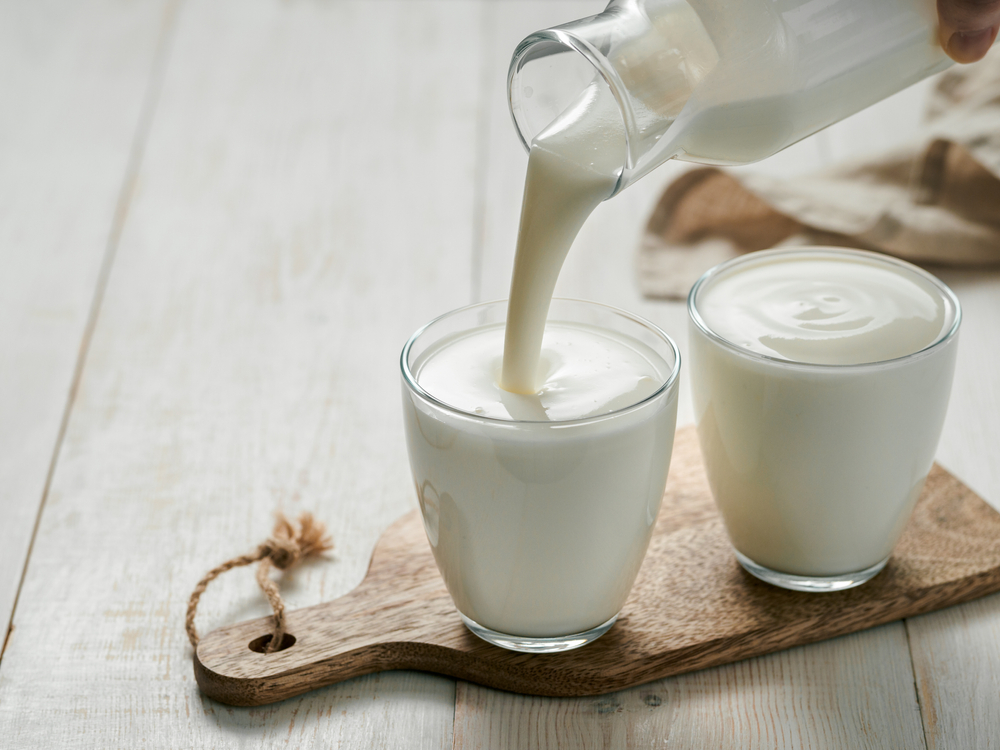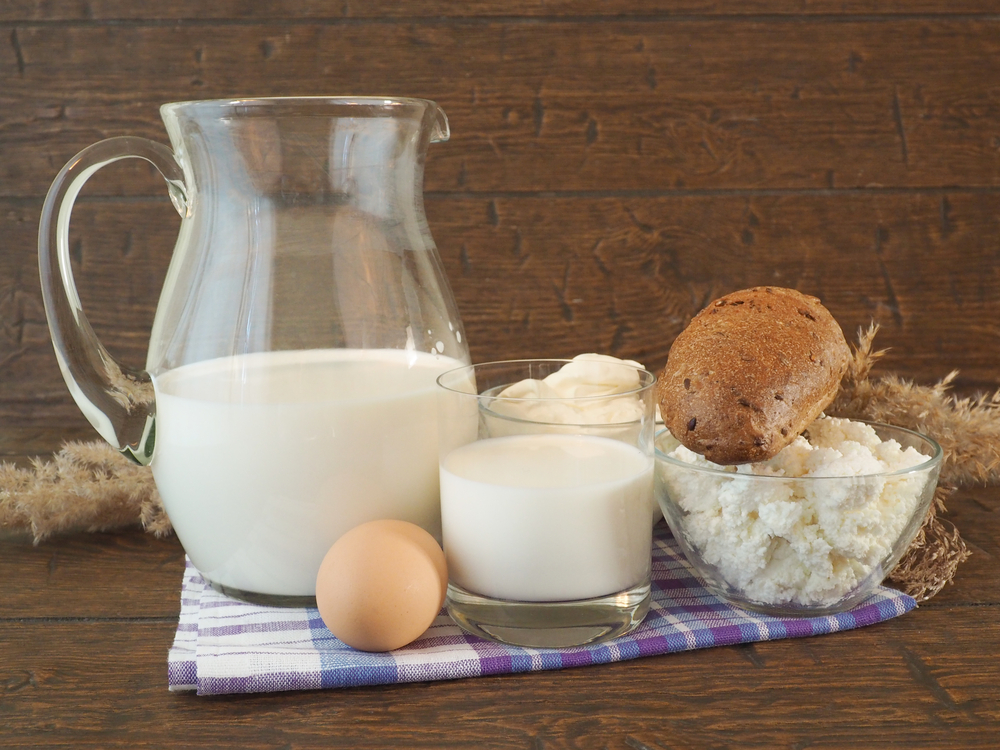Finding buttermilk can sometimes be a challenge for those new to cooking or residing in an unfamiliar area. Buttermilk is a staple ingredient in many baked goods and savory dishes due to its tangy flavor, thick texture, and tenderizing properties.
This article aims to guide you through the various places where you can find buttermilk and provide tips for making the most out of this versatile ingredient.
Buttermilk is a fermented dairy product that has a unique combination of acidity, creaminess, and taste. It is commonly found in grocery stores, usually located in the dairy aisle near milk and cream products.
In addition, multiple online retailers offer buttermilk to cater to those seeking convenience and accessibility.
Key Takeaways
- Buttermilk is a popular ingredient in cooking and baking, known for its unique flavor and tenderizing properties.
- It can be found in most grocery stores and online retailers.
- Different types of buttermilk and alternatives are available, offering versatility in the kitchen.
Understanding Buttermilk
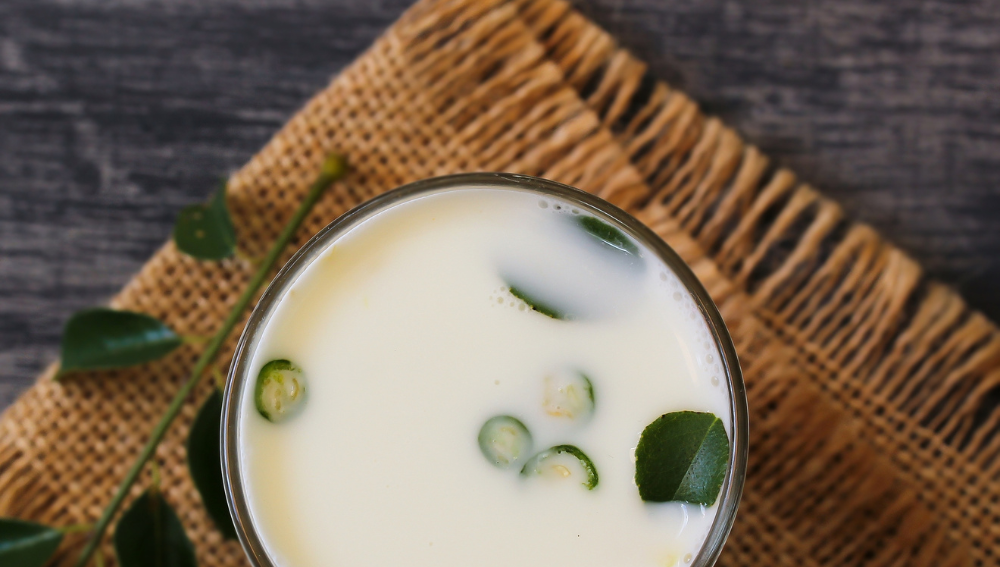
Buttermilk refers to a dairy product that is slightly acidic and has a tangy flavor. It is produced in two forms, which are traditional buttermilk and cultured buttermilk.
Traditional buttermilk is the liquid residue left behind after churning butter from cream. On the other hand, cultured buttermilk is processed by adding bacterial cultures to milk, thus fermenting it.
The fermentation process results in the formation of lactic acid, giving buttermilk its distinct tangy taste.
Despite having the word “butter” in its name, buttermilk has less fat than regular milk. The butter-churning process ensures that most of the fat moves into the butter, leaving a low-fat buttermilk.
Due to its low fat content, buttermilk is a popular choice for cooking, baking, and even consuming directly.
Some of the properties of buttermilk include:
- Tangy flavor
- Low fat content
- Slightly thickened texture
- Contains beneficial bacteria from the added cultures
Cultured buttermilk is widely available in grocery stores, with some variations in taste and thickness depending on the specific cultures used.
To substitute buttermilk in a recipe, one can mix one tablespoon of vinegar or lemon juice with a cup of milk and let it sit for a few minutes to achieve a similar acidity level. This method may be useful when buttermilk is not readily accessible.
In summary, buttermilk is a versatile dairy product with a tangy flavor and low fat content. It is either produced through the butter-churning process or by fermenting milk using bacterial cultures.
Easily found in most grocery stores, buttermilk can be used in a variety of recipes, making it a kitchen staple for many cooks.
Buttermilk in Cooking and Baking
Buttermilk is a versatile ingredient used in various cooking and baking applications. It is often incorporated into recipes for its acidity and tangy flavor, which can enhance many dishes.
The presence of lactic acid in buttermilk adds depth of flavor and tenderizes food, making it a popular choice for marinades, particularly for poultry.
In baking, buttermilk plays a significant role in the texture and taste of cakes, pancakes, and other baked goods. When combined with baking soda, a leavening agent, the acidity in buttermilk reacts to produce carbon dioxide.
This reaction creates bubbles, which help make the baked goods light and fluffy. As a result, many baking recipes rely on buttermilk to produce fluffier pancakes, tender cakes, and moist muffins.
The acidity of buttermilk also interacts with the proteins in flour, allowing for better gluten development in baked goods. This results in a more desirable crumb structure and a softer texture, which is often sought after in many baked items.
In summary, buttermilk is a valuable ingredient in both cooking and baking, offering unique flavor and texture enhancements.
Its acidity and tanginess can elevate dishes from ordinary to exceptional while also providing functional benefits such as tenderization and leavening.
By implementing buttermilk in various recipes, one can unlock its full potential as a versatile and vital component in the culinary world.
Finding Buttermilk in Grocery Stores
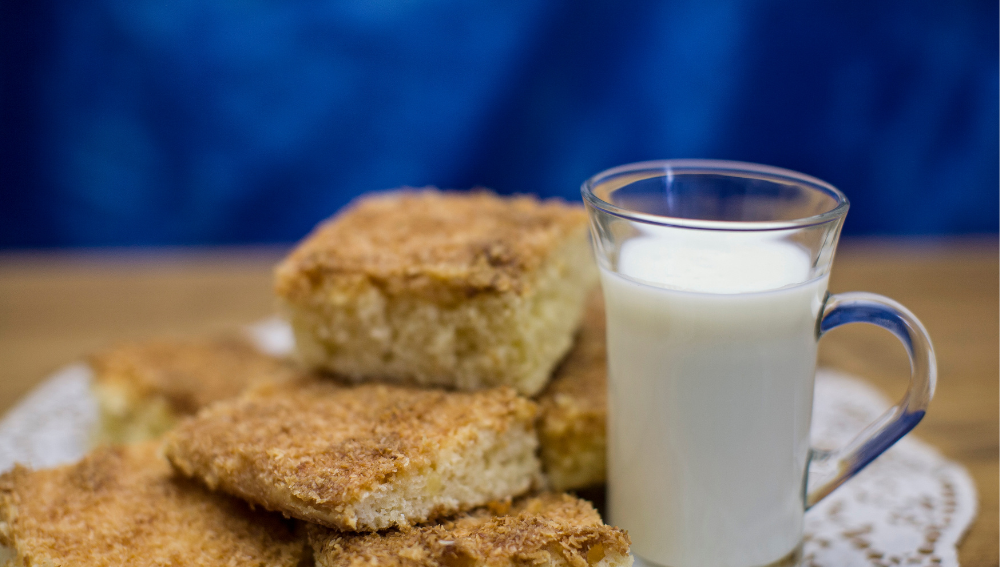
Locating Buttermilk in Grocery Store
Buttermilk can typically be found in the dairy section of most grocery stores. The dairy section is usually located near the back or along the perimeter of the store.
Look for refrigerated shelves containing milk, yogurt, and other dairy products, as the buttermilk will likely be placed nearby. Most stores will stock several brands of buttermilk, often in both regular and low-fat options.
Popular Grocery Stores for Buttermilk
A variety of popular grocery stores sell buttermilk. Here is a list of some well-known chains where you should be able to find buttermilk in the refrigerated section:
- Walmart
- Whole Foods
- Kroger
- Trader Joe’s
- Publix
- Saco
- Meijer
- Costco
- Safeway
- Target
Remember that the availability of buttermilk may vary by location. In some regions, specific brands may be more popular or easier to find than others.
It is always a good idea to check with your local store to ensure they carry the product you are looking for.
Online Shopping for Buttermilk
Shopping for buttermilk online provides several advantages, including convenience, a wide range of selection, and delivery options.
In this section, we will explore the benefits of purchasing buttermilk online and highlight popular e-commerce platforms, helping you find the best place to make your purchase.
Efficient Buttermilk Delivery Services
Amazon is a popular online marketplace, where you can find a variety of buttermilk brands and products. They offer quick and reliable delivery, often available for both Prime and non-Prime members:
- Fast delivery: Amazon is known for its quick delivery times, with many products eligible for same-day or next-day delivery, depending on your location.
- Wide selection: Shoppers can browse an extensive range of buttermilk products, including organic, low-fat, and lactose-free options.
- Customer reviews: Reading customer reviews can help you make an informed decision about which buttermilk to purchase, as you’ll see real users’ experiences with the products.
Utilizing online grocery stores is another convenient option for purchasing buttermilk. Many well-known retailers, such as Walmart, Target, and local supermarkets, provide online shopping and delivery services:
| Retailer | Delivery Options | Pickup Options |
|---|---|---|
| Walmart | Home delivery through partners like Instacart | In-store or curbside pickup |
| Target | Same-day delivery via Shipt | In-store or curbside pickup |
| Supermarkets | Local delivery or through third-party services | In-store or curbside pickup |
With these services, it’s possible to buy buttermilk along with other grocery items, and have them delivered right to your doorstep, saving you time and effort. The availability and speed of delivery might vary based on your location and the chosen retailer.
For those who value organic, artisanal, or specialty products, a search for niche online stores catering to these preferences can yield great results.
Several online stores offer a unique selection of buttermilk, often with detailed information about the producers and farming practices.
Although the delivery times and costs for these sites might be higher, supporting small producers and obtaining high-quality products can make it a worthwhile investment.
In summary, purchasing buttermilk online can be a convenient and efficient method, with a wide variety of retailers and delivery options to accommodate different preferences and needs.
Finding Buttermilk in Grocery Stores
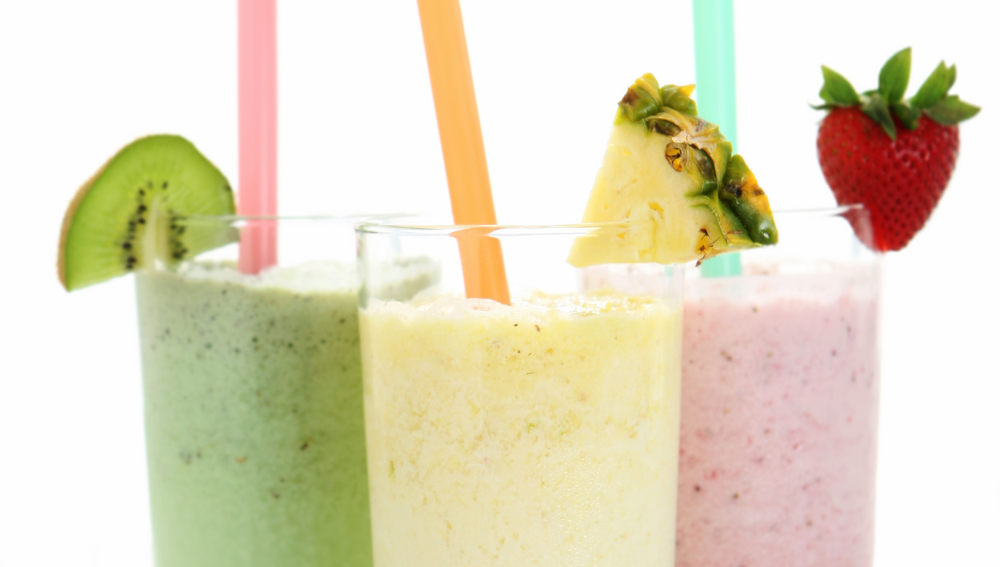
Regular vs Churned Buttermilk
Churned buttermilk is the traditional type, a byproduct of the butter-making process. It is made by churning heavy cream to separate the butterfat, leaving behind a tangy liquid. This buttermilk has a slightly thicker consistency and a rich, creamy taste.
Regular buttermilk, also known as cultured buttermilk, is the most commonly found type in stores. It is made by adding bacterial cultures to milk, which ferment the lactose into lactic acid, giving it a tangy taste and thicker consistency than regular milk.
This type of buttermilk is commonly used for baking and cooking.
Comparison: Powdered vs Carton Buttermilk
Carton buttermilk is typically found in the refrigerated dairy aisle and is often cultured buttermilk. Regular buttermilk can be used as a standalone drink or added to various recipes for a rich, tangy taste.
Powdered buttermilk can be found in the baking aisle or powdered milk section of grocery stores. This alternative is made by dehydrating regular buttermilk, resulting in a powder that can be mixed with water to reconstitute the liquid.
| Carton Buttermilk | Powdered Buttermilk | |
|---|---|---|
| Storage | Requires refrigeration | Does not need refrigeration, longer shelf life |
| Taste and consistency | Tangy and creamy | Can lack the rich taste and creaminess of regular buttermilk, reconstituted with water |
| Best for | Drinking, baking, and cooking | Baking, especially when refrigerated buttermilk is not available |
When to use which:
- For drinking or recipes requiring the tangy taste and rich consistency of regular buttermilk, opt for the carton buttermilk.
- For recipes that call for a buttermilk substitute in baking, powdered buttermilk may be a more convenient alternative, especially considering its longer shelf life.
Alternatives and Substitutes for Buttermilk
Buttermilk can be a key ingredient in many recipes, providing a tangy flavor and tender texture. However, it might not always be readily available. In such cases, a variety of substitutes can work just as well.
How to Make Homemade Buttermilk Alternatives
- Yogurt: A popular alternative to buttermilk is yogurt, especially plain yogurt. It shares a similar consistency and sour taste. To substitute, mix equal parts of yogurt and water, then use the same amount called for in your recipe.
- Sour Cream: Just like yogurt, sour cream is another good standby option. Its thickness and acidity are comparable to buttermilk. Use it in a 1:1 ratio as a direct replacement.
- Lemon Juice or White Vinegar: Both lemon juice and white vinegar can help mimic the acidity of buttermilk. To make your substitute, combine 1 tablespoon of lemon juice or white vinegar with 1 cup of regular milk. Allow the mixture to stand for 5 minutes before using it in your recipe.
- Milk and Cream of Tartar: Cream of tartar is an acid that, when combined with regular milk, creates a buttermilk-like consistency. Mix 1 ½ teaspoons of cream of tartar with 1 cup of milk and let it stand for a few minutes before incorporating it into your dish.
Using these alternative options, home cooks can rest assured that they can create delicious recipes that call for buttermilk without having the actual ingredient on hand.
Storing and Extending Shelf Life of Buttermilk
Buttermilk, like most dairy products, requires proper storage to maintain its freshness and quality. To ensure the best taste and prevent spoilage, it is essential to store buttermilk in the refrigerator.
When bringing buttermilk home from the store, promptly place it in the refrigerator, ideally at a temperature between 35°F and 40°F.
Keeping it in the refrigerator section, specifically the back area, will provide the most consistent and coldest temperatures. Avoid storing buttermilk in the refrigerator door, as the temperature may fluctuate due to frequent opening and closing.
Once opened, it is crucial to store buttermilk in a tightly sealed container. This will prevent exposure to air, which can accelerate spoilage and affect the flavor.
To further extend the shelf life, consider transferring the buttermilk to an airtight glass or plastic container, as this can help preserve the taste and quality.
In general, buttermilk can last up to two weeks in the refrigerator. To check for spoilage, look for any signs of mold, an off smell, or changes in texture.
These can indicate that it is no longer safe to consume. If the buttermilk still appears fresh after two weeks, it is best to use it as soon as possible, as the quality may decline over time.
If buttermilk will not be used within the typical shelf life or if a larger quantity has been purchased, it can be frozen for later use. To freeze buttermilk, pour it into a clean, airtight container, leaving room for expansion as it freezes.
Frozen buttermilk can last up to three months while retaining its quality. To use the frozen buttermilk, simply defrost it in the refrigerator and be sure to mix well before incorporating it into recipes.
By following these guidelines for storing buttermilk, it is possible to maintain its freshness and best maximize its shelf life.
Incorporating Buttermilk Into Your Daily Meal

Buttermilk is a versatile ingredient that can be incorporated into various dishes and drinks to add flavor and enhance their nutritional profiles.
Rich in protein, buttermilk can be used to prepare both savory and sweet recipes, providing numerous options for incorporating it into your meals.
Cakes often call for buttermilk as an ingredient, as it helps create a moist and tender crumb texture with a slight tanginess.
The acidity of buttermilk also reacts with baking soda, producing a light and fluffy cake. Whether you’re making a classic chocolate cake or branching out to red velvet, buttermilk can elevate your baking game.
Smoothies are another simple and delicious way to incorporate buttermilk into your daily meal. A buttermilk smoothie can be a refreshing alternative to a traditional milk-based smoothie, offering a tangy and creamy taste.
Combine buttermilk with fruits, like berries and bananas, or add a scoop of protein powder for an extra nutritional boost.
For those interested in a probiotic-rich drink, kefir made from buttermilk is an excellent option. Buttermilk kefir can be consumed on its own, used as a base for smoothies, or even incorporated into salad dressings and dips.
The probiotics in kefir aid digestion and support gut health, making it a beneficial addition to your meal plans.
To find quality buttermilk, consider shopping at stores such as Whole Foods Market. Brands like Five Acre Farms offer locally-produced buttermilk, ensuring freshness and supporting local farmers.
If you’re unable to find buttermilk at your local grocery store, you can also make it at home by adding vinegar or lemon juice to milk, which will create a similar acidity and taste.
Incorporating buttermilk into your daily meals not only enhances the taste of your dishes, but also provides added nutritional benefits. With options like cakes, smoothies, and kefir, there are plenty of ways to enjoy this versatile ingredient.
Frequently Asked Questions
Where to locate buttermilk in grocery stores?
Buttermilk can usually be found in the dairy section of most grocery stores. It is typically located near other milk products, such as cream and yogurt. If you are having difficulty finding it, ask a store employee for assistance.
Can you buy buttermilk at Walmart?
Yes, you can purchase buttermilk at Walmart. It is available in the dairy section, alongside other milk products. Walmart may also offer different brands and sizes, depending on the location.
What is a good substitute for buttermilk?
If you cannot find buttermilk or run out of it while cooking, you can make a simple substitute using milk and vinegar or lemon juice.
Combine one cup of milk with one tablespoon of white vinegar or lemon juice and let it sit for a few minutes. This mixture will have a similar acidity to buttermilk and can be used in most recipes.
Is buttermilk available at Target?
Buttermilk can, indeed, be found at Target stores. Like in other stores, it is located in the refrigerated dairy section near other milk products. The availability may vary depending on the specific Target location.
Can milk be used as a replacement for buttermilk?
Milk alone cannot replace buttermilk in recipes, as it lacks the acidity needed for certain reactions in cooking and baking. However, as mentioned above, you can create a buttermilk substitute by adding vinegar or lemon juice to regular milk.
Is there a difference between buttermilk and heavy cream?
Yes, there is a significant difference between buttermilk and heavy cream. Buttermilk is the slightly sour liquid left after churning butter, while heavy cream is a high-fat dairy product used for whipping cream and in various recipes.
The two cannot be used interchangeably, as their properties and flavors are different.



